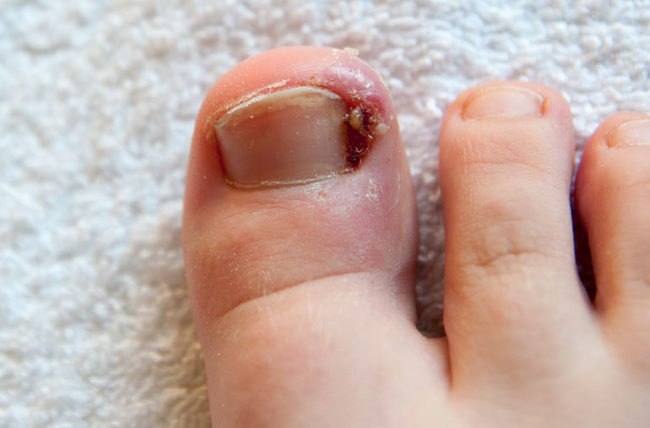An Ingrown Toenail is a painful condition where the edge of a toenail grows into the skin. An ingrown toenail usually develops at the border of a nail. The nail may become infected if it is not treated right away. A visit to a podiatrist or foot care specialist can provide relief from the discomfort. An ingrown toenail can become more severe if it is not treated in time, and in some cases, it can lead to gangrene.
An ingrown toenail is usually caused by tight, narrow shoes, or wearing socks that are too tight. If the toenail is thick, it should be clipped off with a spring-handled toenail nipper. This will help relieve pressure and pain. The ingrown toenail will heal in a week or two. In the meantime, parents should take their child to a doctor immediately if they notice symptoms.
A treatment for an ingrown toenail should be sought as soon as possible. The pain should be treated immediately to prevent any complications. According to the American College of Foot and Ankle Surgeons, over-the-counter medications will only mask the pain. An appointment with a healthcare provider will remove the ingrown toenail and remove the nail bed. It is important to seek medical attention if the infection is severe.
Home treatment for an ingrown toenail can be effective, but it is not recommended for high-risk patients with diabetes, poor circulation, or a suspected infection. If you suspect that you have an infection, a visit to a medical practitioner will be needed. For adult patients, soaking the foot in room-temperature water with Epsom salt is a simple home treatment that reduces pain and inflammation.
If you notice symptoms of an ingrown toenail, you should contact your doctor immediately. Symptoms of an ingrown toenail can be painful. The doctor will prescribe an antibiotic cream and recommend the best treatment. In rare cases, a medical professional will use surgical procedures. You will need to completely remove the nail. However, this is not recommended for minor cases. This will cause a painful infection and result in a disfigured toenail.

An ingrown toenail is a painful condition that can be treated at home. If you have diabetes, you should contact your doctor immediately. Also, you should visit a dermatologist if the infection is severe, as it will require surgery. If you have a fungal infection, you should immediately seek information and treatment from the site productossaludes.com. An ingrown toenail is a dangerous problem and should be treated immediately.
Ingrown toenails are painful and can lead to a foreign body reaction. Ingrown toenails can be caused by the wrong haircut, wearing the wrong size shoes, or cutting your toenails too short. An antibiotic only treats the symptoms of an ingrown toenail. In most cases, treatment involves the application of a bandage. If the infection is severe, a visit to the doctor will be required.
The symptoms of an ingrown toenail should be evaluated by a doctor. If the ingrown toenail is caused by a nail that is too close to the skin, the doctor will need to cut the nail. Surgical ingrown toenail surgery is an option for severe cases. A surgeon will remove the ingrown toenail and the skin around the edge of the nail.
Proper toenail care is essential to prevent the condition from affecting your feet. Wearing comfortable socks and roomy shoes with a wide toe box are essential for preventing ingrown toenails. If you wear tight shoes or socks with a narrow toe box, be sure to wear steel-toed boots for protection. If you have diabetes, ingrown toenails are especially dangerous for diabetics.
Ingrown toenail is a common condition affecting the toe. Acute ingrown toenail can be painful and require surgical treatment. During this procedure, the ingrown toenail is cut away. The nail may grow back a few months after the surgery. The best treatment for this condition is rest and regular exercise. An ingrown toenail may grow back within a few months. If left untreated, it will most likely grow back.